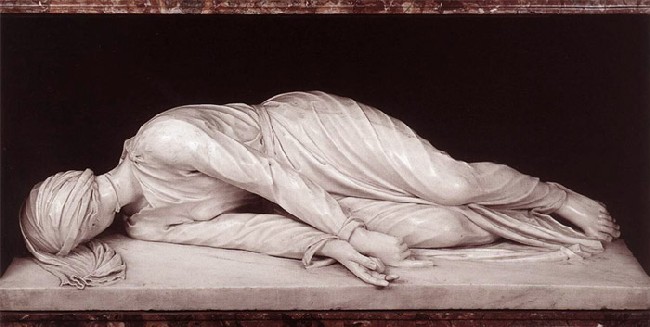I grew up in a secular family. I am a former atheist, former Protestant evangelical in the Reformed tradition, and now a oblate at a Catholic Benedictine monastery.
But all that is just background. Even before I became a Christian, I had been inside and seen pictures of the interiors of older Catholic churches.
I thought that Catholic church interiors look the way they do (especially the older ones) because of the design tastes of the people who served as the church’s interior decorator when it was built.
Because I did not know any better, I thought that Catholic churches had interior decorating that served the same purpose as the decorations in any commercial building or private house. Do the decorations look good together and set the right atmosphere for the events taking place in the building? I had this sense about the interiors of Catholic churches.
My notion that Catholic church interiors were just another decorating style changed completely after spending time alone in the abbey church.
After seeing the pictures in the stained-glass windows, the designs, statues, and the various words and letters (IHS, on the cross, for example), I realized that I didn’t have a clue about what these elements meant.
I knew that, if properly understood, these “decorations” took on a far larger role than the color of the tile in a pretty office building. There are many items in the church and many people are represented in some form or another. Invariably, these people are holding something or standing next to something. I know these must be key parts of the grammar and the story being told. A great cloud of witnesses, but what are they saying?
The interior of a Catholic church is an important language, used for significant communication, and it is in this language that the sanctuary speaks to all who enter.
I want to know what the sanctuary is saying, but I do not understand the language. Or, I understand only part of it, little by little. For example, I recently learned that the letters “IHS” on the cross are a monogram for the name of Jesus, IHESUS according to the New Advent 1917 Catholic encyclopedia, which goes on to state, “[IHS] is first found on a gold coin of the eight century: DN IHS CHS REX REGNANTIUM (The Lord Jesus Christ, King of Kings).”
Without knowing every detail of what the sanctuary is saying, I feel the same as if I was prevented from reading every word of a good book cover to cover — I want to know the whole account, not just a brief outline or the“Church Interiors for Dummies” version.
On my list of things I would like to do is to visit a Catholic church with someone who speaks “Catholic Church Interior” and who could start at the entrance of the church and translate into English every tiny detail and word the sanctuary is telling me in its forms and designs.
I know when I enter the sanctuary that it is speaking and I want to hear with understanding.
Sunday, July 20, 2008
The Silent Sanctuary Speaks. A Benedictine oblate blog.
Labels:
..Oblates - my oblate life,
Silence
Subscribe to:
Post Comments (Atom)










The Cathedral my husband and I attend recently published a book that explains the history of the Cathedral, including gory detail of the interior. The lower level of stained glass windows, for example shows salvation history and the upper level shows church history (although, it stops at the time when the Cathedral was finished about 100 years ago :P). The stained glass windows alone pack in so much symbolism and "language", it's impressive.
ReplyDeleteKim,
ReplyDeleteThank you for the comment. Your Cathedral performed a wonderful service. A book explaining the meaning of the interior of the church is somewhat like a missal for the sanctuary.
In some respects, for me, as someone who has little Catholic background, not knowing the meaning of the symbolism used throughout a Church’s interior is like going to a theater where I could only hear, but not see the movie.
Tip o’ the hat to your Cathedral.